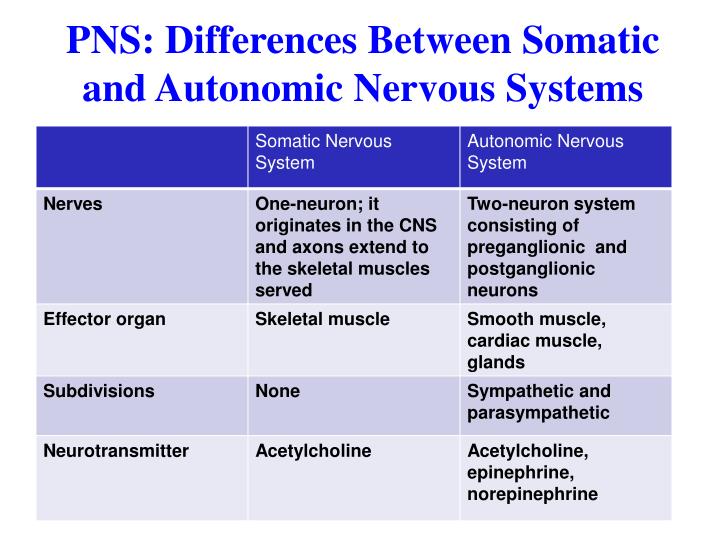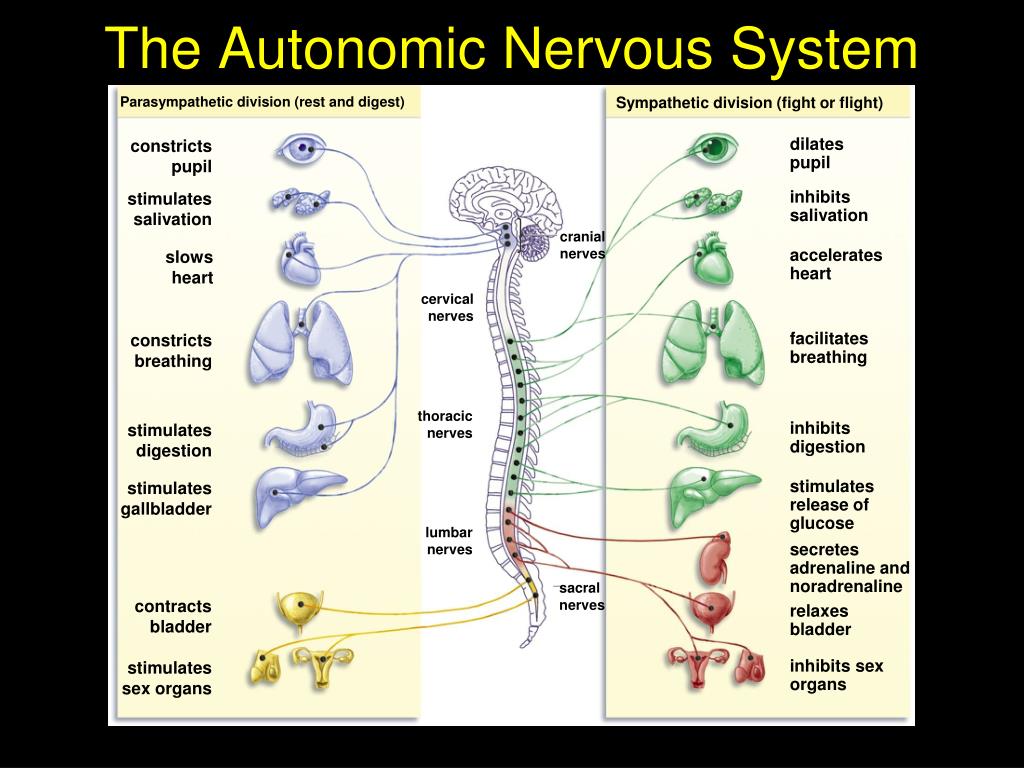

Specifically, they have their dendrites and cell bodies within the lateral gray horns of the thoracic and lumbar segments of the spinal cord (see Figure 16-3, A). Sympathetic preganglionic neurons begin within the spinal cord. Essential features of the somatic motor pathways and autonomic efferent pathways are further compared and contrasted in Table 16-1. Conduction to autonomic effectors, however, requires a sequence of two efferent neurons from the CNS to the effector. Conduction to somatic effectors requires only one efferent neuron, the somatic motor neuron that originates in the anterior gray horn of the spinal cord. Because this second neuron conducts impulses away from the ganglion and to the effector, it is called the postganglionic neuron.Īs you can see in Figure 16-3, A, this plan fundamentally differs from the efferent pathways of the somatic motor nervous system. Within an autonomic ganglion, the preganglionic neuron synapses with a second efferent neuron. Preganglionic neurons conduct impulses from the brainstem or spinal cord to an autonomic ganglion, locating them before the ganglion-thus preganglionic. The first is called a preganglionic neuron-an awkward name but a descriptive one. Thus as with somatic motor regulation, efferent autonomic regulation ultimately depends on feedback from the sensory pathways.Ī relay of two autonomic neurons conducts information from the central nervous system (CNS) to the autonomic effectors. As with all efferent neurons, efferent autonomic neurons function in reflex arcs. They conduct impulses away from the brainstem or spinal cord to autonomic effectors. These structures, in turn, are made up of efferent autonomic neurons. STRUCTURE OF THE AUTONOMIC NERVOUS SYSTEMĮach efferent autonomic pathway, whether sympathetic or parasympathetic, is made up of autonomic nerves, ganglia, and plexuses. Some autonomic effectors are singly innervated, receiving input from only the sympathetic division. Such antagonism also allows a dually innervated effector to participate in timed events, such as the sexual response, in which effectors must be stimulated and then rapidly inhibited (or vice versa) in a specific timed sequence. The opposing influences allow a dually innervated effector to be controlled with remarkable precision. This is similar to the antagonistic effects of an accelerator and brake in a vehicle. In dually innervated effectors, the effects of the two systems are often antagonistic: one inhibits the effector and the other stimulates the effector.

Note that although the sympathetic pathways are separate from the parasympathetic pathways, most autonomic effectors are innervated by both pathways. pl., gangliaįIGURE 16-2 Divisions of the autonomic nervous system. (non-AD-ren-er-jik non-KOHL-iner-jik tranz-MISH-un) Nonadrenergic-noncholinergic (NANC) transmission


 0 kommentar(er)
0 kommentar(er)
